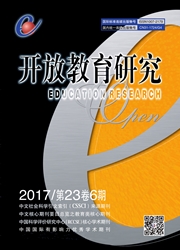

 中文摘要:
中文摘要:
随着课程数量和学习人数持续增长,慕课为高等教育发展提供了新的市场机遇。为慕课授予学分已成为大学应对挑战的一项策略。慕课的出现让大学的教育功能和授予学分的功能可以相分离。大学正在分化为开设慕课的大学和引进慕课的大学,高等教育的竞争格局正在发生变化。根据课程和学分的来源,大学为慕课授予学分可分为自授学分、联盟学分、合作学分和认证学分四种模式。通过比较世界各国出现的慕课学分认定策略,本研究发现高等教育市场环境和制度环境会影响不同学分模式下授予慕课学分产生的成本和收益。不同国家所处的高等教育发展阶段及其目标导致各国选择了不同的慕课学分模式。美国作为高等教育强国,其大学并不积极引进尚处于初期发展阶段的慕课课程。美国的慕课平台与一流大学目前主要采用自授学分模式,针对准备进入大学和研究生院的学习者推出学分课程。印度作为欠发达人口大国,亟需利用慕课扩大高等教育质量和入学机会。因此,印度政府与其国家慕课平台采用政府主导的认证学分模式,让著名大学提供优质课程,并要求普通大学引进慕课并为之授予学分。中国作为中等收入的高等教育大国,需要借助慕课提升高等教育质量。中国的慕课平台和大学主要使用合作学分模式建立竞争性课程市场,从而更有利于推动慕课创新。四种慕课学分模式各有所长,可视为一组政策工具,加以灵活运用,促进慕课市场的成长。中国应当破除学分制度存在的障碍,引入自授学分和认证学分模式激励大学提供优质课程,释放慕课提升高等教育质量的潜力。
 英文摘要:
英文摘要:
As the number of courses and the quantity of learners continue to rapidly increase, MOOCs provide a new market opportunity for the development of higher education. Granting MOOC credit has become a strategic action which universities must consider in order to meet the new challenge posed by MOOC era. The rise of MOOC enables the separation of education and credit award in universities. Universities are being stratified into MOOC exporters and im- porters, which will definitely change the competitive landscape in higher education. According to the sources of courses and credits, there are four models of MOOC credit: self-awarded credit, consortium credit, contracted credit and accredited credit. By comparing various policies that offer MOOC credit in different countries, this article discovers that a country's higher education market environment and institutional environment may affect the cost and benefit of granting MOOC credit in different models. The goal and phase of higher education development decide the model of MOOC credit that a country chooses. As the United States has the best higher education in the world, its universities are reluctant to accept MOOCs which are still in its initial stage. MOOC platform and top universities in the US primarily use the model of self-award credit to target potential incoming students for colleges and graduate schools. India as an underdeveloped country with a large population faces the double challenges of improving the quality of university teaching and expanding access to higher education. The government in India and its national MOOC platform adopt the model of accredited credit, asking reputable universities to provide high-quality MOOCs and requiring ordinary universities to accept MOOCs and award credit to MOOC learners. China as a middle - income country needs to improve the quality of higher education through MOOCs. MOOC platforms and universities in China mainly use the model of contracted credit and create a competitive MOOC market, which is conducive to M
 同期刊论文项目
同期刊论文项目
 同项目期刊论文
同项目期刊论文
 期刊信息
期刊信息
